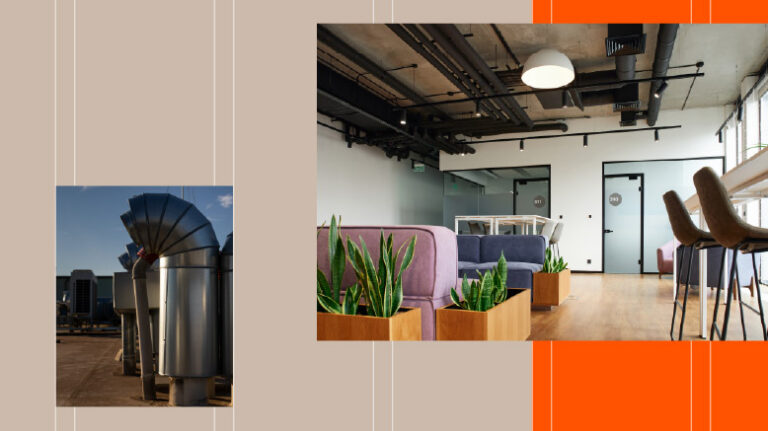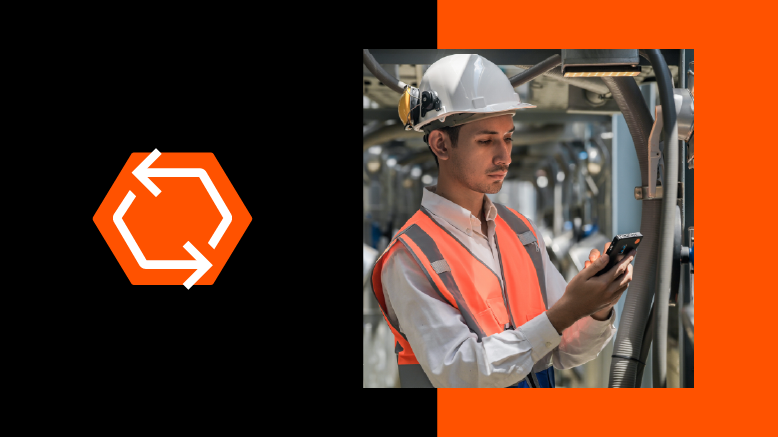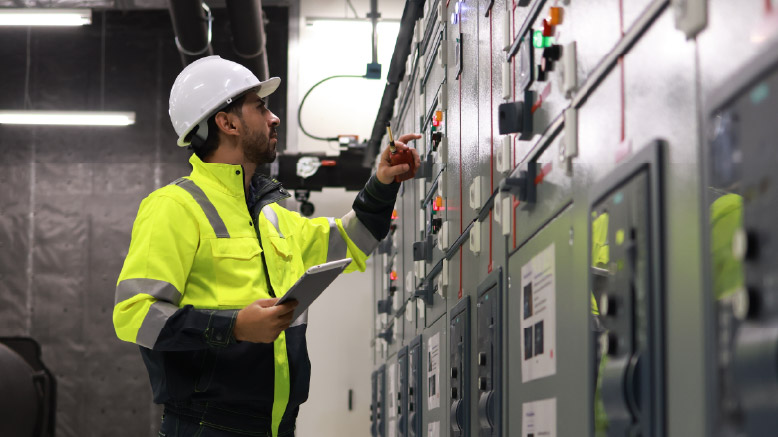— 5 min read
Comfort Mood: Making MEP Central to Occupant Comfort


Last Updated Aug 14, 2025

Danny Stumbras
Manager, Strategic Product Consultants, Specialty Contractors
Danny Stumbras, MBA is a versatile, seasoned construction professional with a wealth of knowledge in several core areas including project management and all facets of specialty contractor trades. At Procore, Danny focuses specifically on consultant relationships and leverages his past experiences to drive recognizable value to all segments of the customer base. He earned a BA from the University of Colorado where he focused on Environmental Studies and an MBA from the University of Utah – David Eccles School of Business.

Diane McCormick
Writer
49 articles
Diane McCormick is a freelance journalist covering construction, packaging, manufacturing, natural gas distribution, and waste oil recycling. A proud resident of Harrisburg, PA, Diane is well-versed in several types of digital and print media. Recognized as one of the premier voices in her region, she was recognized as the Keystone Media Freelance Journalist of the Year in 2022 and again in 2023.
Last Updated Aug 14, 2025

In many post-COVID-19 projects, occupant comfort has transitioned from a “nice to have” to a “must have.” It’s infused into collaborations from the earliest phases of design and preconstruction.
That puts mechanical, electrical and plumbing (MEP) front and center. MEP contractors deliver the essentials of a comfortable experience. Whether they are controlling temperature, air quality, acoustics, lighting or water pressure, they impact the building’s livability and the well-being of its occupants.
This article explores the rise of occupant comfort and MEP contributions, project-specific considerations, integrating smart technology and leveraging occupant comfort for competitive advantage.
Table of contents
Dialing Up Occupant Comfort
Project owners are prioritizing occupant comfort in building construction. Human-centric design exceeds codes in its drive toward sanitary, habitable spaces where people breathe with confidence, gather without fear and bring their best selves to work or play.
Part of the increased focus on occupant comfort is because of greater public awareness. These are things that people weren't paying. These are things people weren’t paying attention to before for health and safety and shared spaces, but it's gone further than just temperature control to air purity, ventilation and mitigation.

Danny Stumbras
Manager, Strategic Product Consultants, Specialty Contractors
Procore Technologies
Fortunately, occupant comfort can easily align with sustainability and operational efficiency goals for seamless integration into the top priorities of today’s sophisticated construction projects.
Build a Strong Foundation with our Preconstruction Course
With 20+ years of experience, Ben Ashburn teaches you how to streamline planning, bidding, and procurement for better outcomes.

Key MEP Factors in Building for Comfort
Operating out of sight, earshot and mind, each MEP factor contributes to the finished building’s comfortable and welcoming experience.
Mechanical
Encompassing temperature, humidity and ventilation, it's the job of mechanical contractors to make sure all the rooms and zones in a building lack cold or hot extremes. They help manage humidity and — depending on geography — prevent mold growth.
They are central to the vital concept of indoor air quality, to prevent the transmission of diseases and toxic particles.
Mechanical contractors also manage acoustic comfort. By insulating and isolating ductwork, process piping and equipment rooms to dampen rumble and rattle, they lessen noise that can distract people from their work or rest.
Electrical
Proper lighting levels encourage efficiency and reduce stress. The right designs reduce glare and, depending on the project, maximize natural light to calm the atmosphere.
Electrical contractors are also central to power reliability, preventing fluctuations and power losses that disrupt occupants’ days.
Plumbing
Clean, safe, potable water is essential to every project. Appropriate temperature controls promote comfort, safety and sanitation. Correct pressure delivers a steady supply of water while also preventing the damage and consequences of backflow.
Like their HVAC colleagues, plumbing contractors can enhance occupant comfort by controlling any noise and “water hammer” knocking from their pipes and installations.
Building-Specific Comfort
Different projects present different demands for occupant comfort.
Healthcare
In health systems, indoor air quality and infection control are paramount for the well-being of patients, staff and visitors. Rooms might be positively pressurized to protect surgery patients from airborne contaminants or negatively pressurized to withdraw contaminants.
Data Centers
In structures housing thousands of servers, equipment needs outrank human comfort. Precise cooling prevents overheating, for optimal efficiency and performance. As mission-critical facilities, data centers, like hospitals, need unerring power reliability and redundancy.
Offices & Institutions
Office buildings, universities, hotels and sports facilities rely on MEP for thermal comfort as well as pleasing aesthetics. Venues and gathering rooms require flexibility that accommodates varying occupancies.
Planning and Design Collaboration
Early integration with the building information modeling (BIM) team eases occupant-comfort principles into planning and design. Because occupant comfort is highly dependent on intricate details, this is the place for MEP contractors and all stakeholders to agree on the model’s level of design.
How do we leverage technology to impact scope, schedule, budget, quality? Early on, you're mitigating risk and cost in the pre-construction and design phase. This is where we're focusing on the BIM, accuracy and cost detection. You're identifying and defining risks before they ever happen on the job.
Danny Stumbras
Manager, Strategic Product Consultants, Specialty Contractors
Procore Technologies
From there, coordination determines execution among the trades as the schedule unfolds. Essential elements at this phase are clash detection and federated models to identify issues early, all delivered on a cloud-based collaboration platform that’s updated in real time.
Smart Technologies and IoT Integration
Advanced technology has given rise to the intricate systems delivering true occupant comfort. The internet of things (IoT) and smart controls essential to building operations are embedded into the design from the beginning.
In this atmosphere, MEP contractors are inserting elements into an interconnected, responsive building. Their collaborative relationships with controls-systems contractors go smoothly with clearly delineated scopes — maybe assigning mechanical contractors to install pressure differential sensors as part of their oversight of inline devices, while controls contractors manage exterior installations.
When the building is operating, real-time monitoring will provide continuous feedback that feeds into AI and machine learning for predictive maintenance. These systems minimize downtime and create self-optimizing buildings that automatically adjust heating, cooling, lighting and plumbing based on trends in occupant behavior and demands on the spaces.
And on the horizon: Personalized comfort controls at individual workstations or zones, where HVAC, especially, is tethered to IoT for automatic adjustments.
The AI-powered building management system is now learning occupant behavior. Gone are the days of just looking at a dashboard and seeing what's happening. It's taking this data, and it's cooling, it's heating, it's dimming lights, it's turning them on, it's ramping up five minutes ahead of time.
Danny Stumbras
Manager, Strategic Product Consultants, Specialty Contractors
Procore Technologies
Building for Comfort: The Impact on MEP Contractors
Given the demands of occupant comfort, MEP contractors play key roles in helping engineers optimize designs, sizing and layouts based on performance and comfort parameters.
As comfort grows more granular, MEP teams will need the expertise and enhanced skills to install increasingly complex systems. MEP contractors striving to keep pace should remain adaptable and present themselves as problem solvers with expertise in the growing field of occupant comfort.
MEP contractors who properly execute strategies to upskill their teams and create a culture of collaboration can gain a competitive edge in a world where every project rests on energy efficiency, smart systems and better occupant comfort.
Was this article helpful?
Thank you for your submission.
0%
0%
You voted that this article was . Was this a mistake? If so, change your vote
Scroll less, learn more about construction.
Subscribe to The Blueprint, Procore’s construction newsletter, to get content from industry experts delivered straight to your inbox.
By clicking this button, you agree to our Privacy Notice and Terms of Service.
Thank you!
You’re signed up to receive The Blueprint newsletter from Procore. You can unsubscribe at any time.
Categories:
Written by

Danny Stumbras
Manager, Strategic Product Consultants, Specialty Contractors | Procore Technologies
Danny Stumbras, MBA is a versatile, seasoned construction professional with a wealth of knowledge in several core areas including project management and all facets of specialty contractor trades. At Procore, Danny focuses specifically on consultant relationships and leverages his past experiences to drive recognizable value to all segments of the customer base. He earned a BA from the University of Colorado where he focused on Environmental Studies and an MBA from the University of Utah – David Eccles School of Business.
View profile
Diane McCormick
Writer | Procore Technologies
49 articles
Diane McCormick is a freelance journalist covering construction, packaging, manufacturing, natural gas distribution, and waste oil recycling. A proud resident of Harrisburg, PA, Diane is well-versed in several types of digital and print media. Recognized as one of the premier voices in her region, she was recognized as the Keystone Media Freelance Journalist of the Year in 2022 and again in 2023.
View profileExplore more helpful resources

Low-voltage Systems: A New Frontier for MEP Contractors
From design through commissioning, low-voltage system designers and the MEP trades are colleagues. They work together to provide the systems that make buildings safe, connected, comfortable, efficient and equipped for...

The MEP Lifecycle: How Contractors Can Benefit from Thinking Ahead
From the beginning of a project, MEP contractors should be thinking about the lifecycle of their systems. Prioritizing the lifecycle early in the process helps MEP trades influence design, select...

Retrofitting Aging Infrastructure: 5 Essentials for Managing MEP Risk
MEP contractors help preserve aging infrastructure by bringing systems to contemporary standards in sustainability, comfort and accessibility. Although the opportunities are unique, retrofits of existing buildings present known obstacles and...

The Top 5 MEP Challenges of Data Centers
Data centers are unique builds that come with unique challenges. MEP contractors stepping up to build data centers are sure to encounter the complexity of systems and the demands of scalability,...
Free Tools
Calculators
Use our calculators to estimate the cost of construction materials for your next project.
Templates
Find a template to help you with your construction project tasks.
Material Price Tracker
Get the latest U.S. retail prices and view historical trends for common building materials.
Glossary
Explore key terms and phrases used in the industry.
